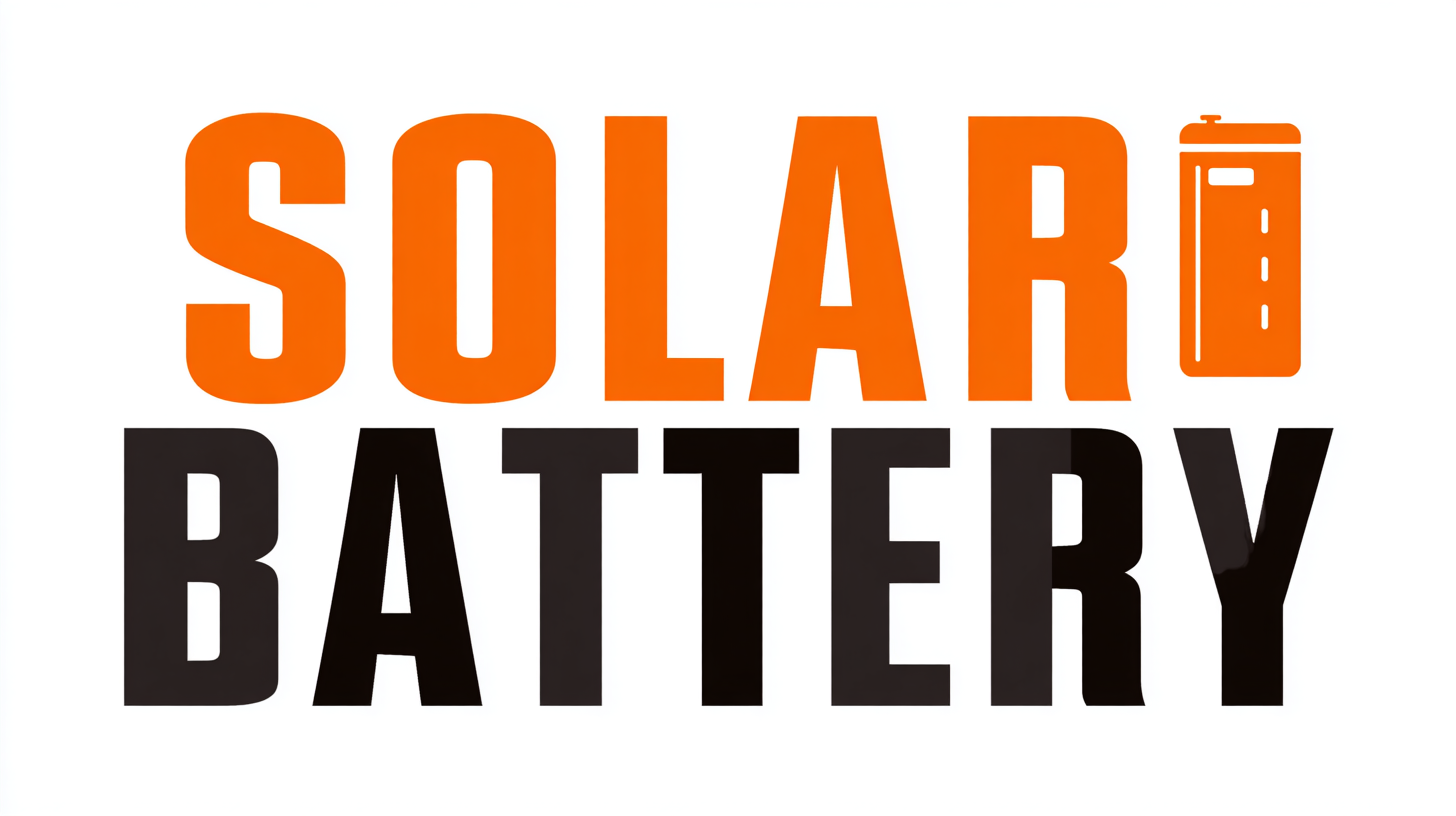As the demand for renewable energy sources continues to rise, the importance of efficient energy storage solutions, particularly the Home Solar Battery, cannot be overstated. According to a report by Wood Mackenzie, the global energy storage market is expected to grow from 10 gigawatt-hours (GWh) in 2020 to 158 GWh by 2025, driven by increases in solar installations and a focus on sustainability. This surge reflects not only a shift towards cleaner energy but also the necessity for homeowners to optimize their energy consumption and reduce reliance on the grid. With the advancement of Chinese manufacturing and technology, high-quality Home Solar Batteries have become increasingly accessible, boasting impressive efficiency and reliability metrics. In this ultimate guide, we will delve into the key factors to consider when selecting the best Home Solar Battery to meet your specific energy needs, ensuring you make an informed decision for a sustainable future.

Recent innovations in solar battery technology are significantly impacting home energy solutions, paving the way for more sustainable living. As battery technology evolves, homeowners now have access to storage systems that not only capture solar energy but also enhance efficiency and reliability. Breakthroughs such as improved current collectors for zinc-ion batteries are addressing common challenges in energy storage, thereby making residential solar systems more effective. These advancements mean that homeowners can enjoy a more stable energy supply, even when solar generation is low.
By integrating cutting-edge energy storage solutions, households are now better positioned to participate in the clean energy transition, contributing to a net-zero future. The increasing affordability of home battery storage systems alongside solar panels empowers homeowners to reduce their reliance on the grid and manage energy usage more efficiently. As we move towards 2025, the potential of solar energy innovations from various technological fields—ranging from space technology to ground-breaking battery designs—promises to reshape the way we generate, store, and utilize energy in our homes.
| Battery Type | Capacity (kWh) | Depth of Discharge (%) | Estimated Lifespan (Years) | Ease of Installation | Cost ($) |
|---|---|---|---|---|---|
| Lithium-Ion | 10 | 90 | 10 | Moderate | 800 |
| Lead Acid | 12 | 50 | 5 | Difficult | 400 |
| Gel | 8 | 80 | 7 | Moderate | 600 |
| Saltwater | 10 | 90 | 10 | Easy | 700 |
When choosing the best home solar battery, understanding key metrics such as capacity, discharge rates, and round-trip efficiency is crucial. Capacity, measured in kilowatt-hours (kWh), indicates how much energy a battery can store. According to a report from the U.S. Department of Energy, most home solar batteries range from 5 kWh to 20 kWh, with larger capacities suited for households with higher energy demands. For example, a household utilizing 30 kWh per day would benefit from a battery system of at least 15 kWh to effectively support its energy needs during non-sunny hours.

Discharge rates, measured in kilowatts (kW), reveal how quickly a battery can release its stored energy. Higher discharge rates allow for running multiple appliances simultaneously, which is particularly beneficial during peak usage times. Research from BloombergNEF indicates that many modern lithium-ion batteries offer discharge rates between 1 kW and 10 kW, enabling flexibility for various usage scenarios. Finally, round-trip efficiency, the percentage of energy that can be put back into the home after charging and discharging, typically ranges from 80% to 95% in high-quality systems. This efficiency rating is essential for maximizing the effectiveness of your solar storage solution, as it directly impacts the overall energy savings and return on investment.
When considering a home solar battery, one of the key factors to evaluate is the
balance between cost and lifespan.
A solar battery is a significant investment, and understanding its long-term value can help you make a more informed decision.
Start by calculating the total cost of ownership, which includes the
purchase price, installation fees, maintenance,
and any potential operational costs over its lifetime. This comprehensive view will help you gauge if the
upfront expense aligns with your energy needs and budget.
Tip: To better assess your investment, calculate the
cost per watt-hour of energy storage, dividing the battery’s price by its total capacity.
This metric allows for a direct comparison of different battery options, helping you pinpoint the
most cost-effective solution.
Another crucial aspect is the lifespan of the battery, typically measured in cycles or years.
Higher-quality batteries may have a higher initial cost but often yield better performance and longevity, resulting in a lower cost per cycle over time.
Tip: Consider the warranty terms offered by manufacturers,
as a longer warranty often indicates greater confidence in the battery's lifespan. Look for batteries with warranties
that cover at least 10 years or a set number of cycles to ensure you're making
a sound investment.

As we approach 2025, the energy storage industry is witnessing remarkable growth, largely fueled by advancements in solar technology and a heightened awareness of the benefits of battery storage. Increased capacity from solar and battery systems has proven essential, especially during high-demand periods, as seen last summer in Texas where these technologies helped stabilize the electric grid. In fact, the U.S. solar industry installed 10.8 GWdc of capacity in Q1 2025, though this marks a 43% decrease from the previous year, highlighting the volatility in market dynamics influenced by tariffs and supply chain challenges.
By 2025, several industry trends are likely to shape the market. With a surge in clean energy investments, the focus will be on reducing costs for both solar modules and batteries. Despite the recent uptick in solar module prices due to tariff adjustments, the push for alternative battery technologies, such as sodium-ion, could provide cost-effective solutions and greater supply chain resilience. As these technologies mature, expect to see innovations that not only enhance performance but also improve overall competitiveness against traditional lithium-ion batteries. In this evolving landscape, consumers will need to stay informed about these trends to make educated choices for their energy needs.
When considering the best home solar battery for your energy needs, understanding the differences between various battery types is crucial.
Gel batteries, known for their robust and spill-proof design, are a popular option for those seeking reliability in moderate climates. They have a longer lifespan compared to traditional lead-acid batteries and require minimal maintenance. However, their overall energy density and performance efficiency may fall short compared to more advanced technologies.
On the other hand, lithium-ion batteries have rapidly gained popularity due to their high efficiency, longer life cycles, and superior energy density.
These batteries can deliver more power in a compact size, making them ideal for households with high energy demands. Although they come at a higher initial cost, the long-term savings and performance benefits make them an attractive option for homeowners.
Lastly, flow batteries are an emerging technology that offers unique advantages, particularly for those needing scalable energy storage. They can provide extended energy output with longer durations and are less susceptible to overheating, but their larger physical footprint and higher complexity could deter some users.
Choosing the right battery depends on various factors such as budget, energy requirements, and installation space. Understanding the strengths and weaknesses of gel, lithium-ion, and flow batteries can help homeowners make informed decisions tailored to their specific energy needs.